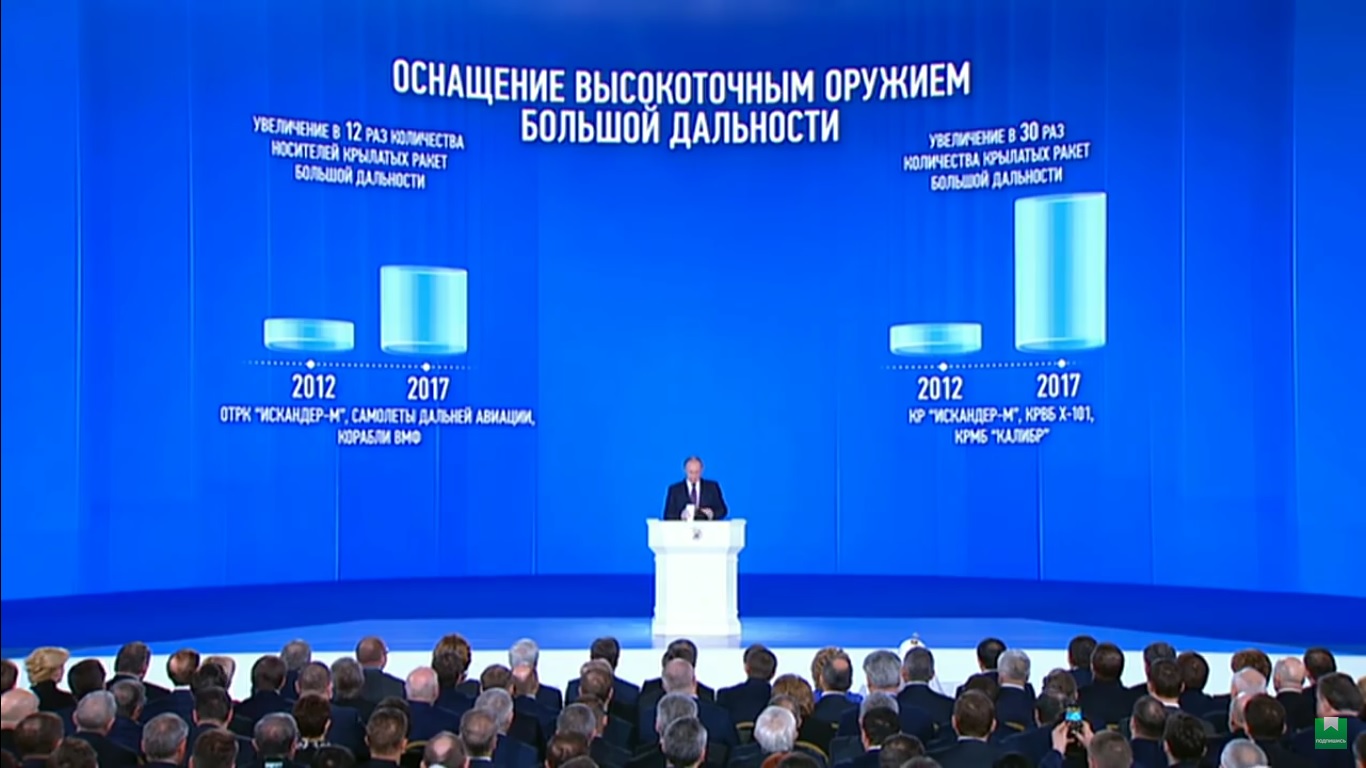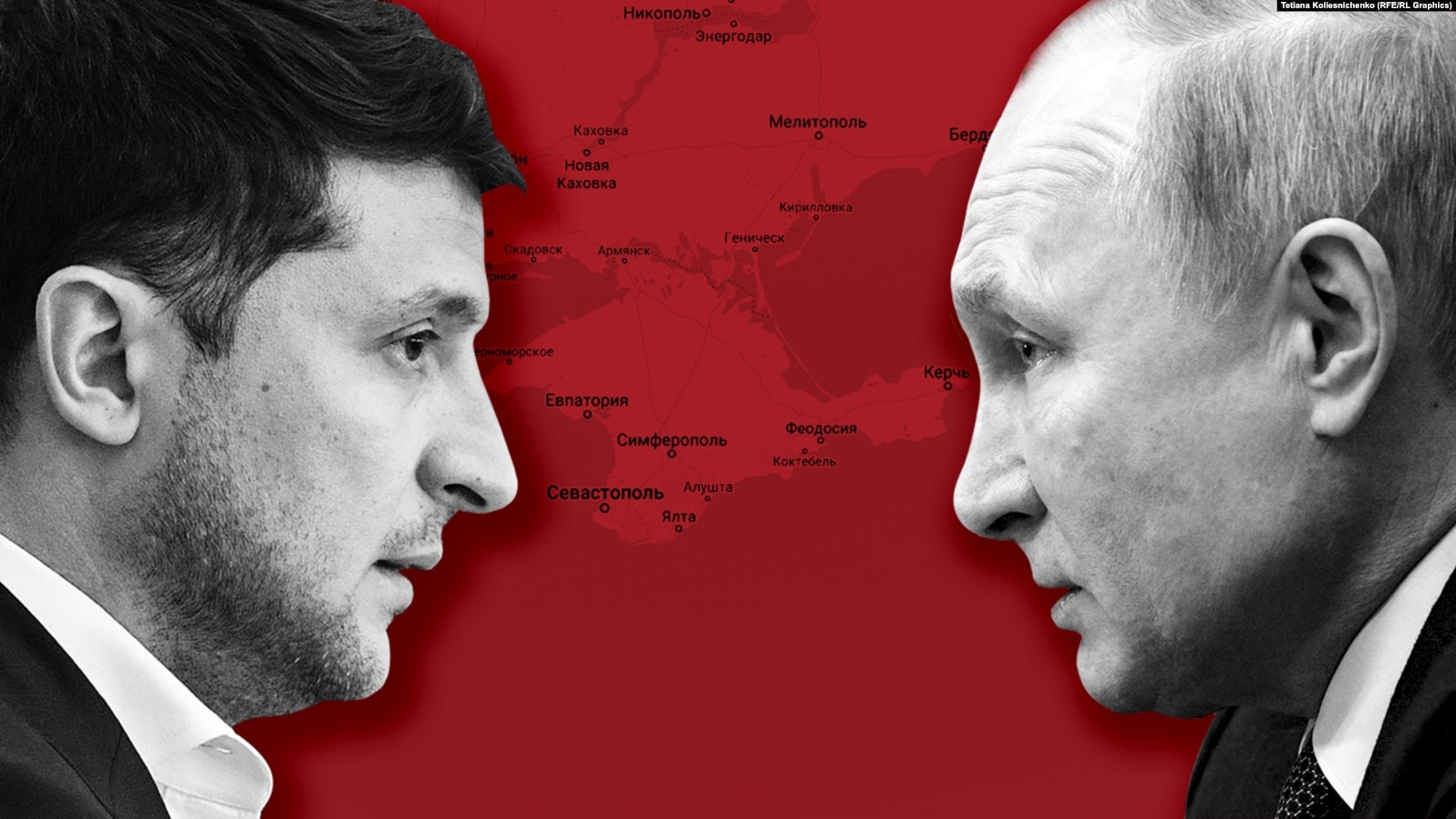Russian President Putin has repeatedly warned the West not to cross a "red line" with Russia, stressing that this would trigger an "asymmetrical, rapid and harsh" response.
The rhetoric is part of its battle in the cognitive space, trying to induce fear to manipulate key decision-makers and policymakers to make the decisions that serve Russian interests. The threats are made credible by its willingness to use military power to achieve its strategic aim and objectives, supported by its violations of laws of armed conflicts and conventions meant to protect both civilians and combatants.
Russian atrocities, war crimes, and crimes against humanity help reinforce the strategic messages: Don’t cross our red lines or else…
They are effective. Russia’s stated red lines have had a huge impact on Western support for Ukraine starting in 2014, and still do.
However, the "red lines tactic" only works because the West believes Russia is willing to act upon them. Russia never did and, most likely, never will act upon them. Why? The unthinkable is still just that: unthinkable.
The West plays along with Russia's "red lines" despite claiming it does not
Ukraine has been actively crossing the so-called “red lines” calling the Russian bluff. Consequently, it has enabled the West to gradually do the same without repercussions.
Despite evidence on the contrary, the Heads of States argue against decisive action for fear of the consequences of crossing the red lines.
The Russian “red lines” include (but are not limited to) warning against:
- Undermining Russia’s external security interests (hinting at its near abroad (Ukraine and Belarus), NATO's so-called “eastward expansion,” zone of special influence (former USSR states), the Arctic and the Baltic states);
- Russian internal security interests, including outside interference;
- Any attempt to retake Crimea;
- Any attacks against Russian territory, including its illegally annexed Crimea, Kherson, Zaporizhzhia, Donetsk, and Luhansk oblasts;
- Ukrainian NATO membership;
- Further NATO expansion of infrastructure or military foothold in Ukraine,
- The deployment of “certain offensive missile capabilities” (MK41 launch systems and Tomahawk missiles) to Ukraine;
- Western help to rebuild Ukrainian security and defence sector;
- NATO deploying its troops and weapons to Ukraine;
- Defeating Russia in Ukraine.
The full list is far longer and includes the supply of lethal aid to Ukraine, arms capable of hitting Russian territory, long-range missiles, Patriot Air Defence systems, main battle tanks, F-16 combat aircraft, MiG-29 fighters, and ATCAMS. It has threatened a strong response to a No Fly Zone over Ukraine, stressing that it would consider any third-party declaration of a no-fly zone as a direct participation in the war.
In December 2021, before Russia’s full-scale invasion of Ukraine, President Biden made it clear that the US would not operate according to “anyone’s red lines” and that, in line with the OSCE Helsinki Final Act and the 1999 Istanbul Charter, to which Russia is a party, “every country has the sovereign right to make its own decisions with respect to its security”. However, when put to the test most NATO member states – including the US – have acted contradictory.
Ukraine’s request for weapons and ammunition has been an uphill battle. Claiming fear of an escalation of the war into a broader confrontation (that is at the core of the present security situation) and a nuclear confrontation, the West has always said no to Ukrainian requests only to say yes months later, providing the means needed.
Germany is still refusing to supply Ukraine with Taurus over fear of escalation. Neither ATCAMS nor F-16 have yet been delivered. The US has chosen to supply so few Abrams tanks and Bradley Fighting Vehicles that it constitutes a symbolic gesture rather than proper military support to help Ukraine liberate occupied territories. More importantly, the West refuse to close the sky over Ukraine or break the maritime embargo in the Black Sea.
This is the present reality despite both Ukraine and the West having repeatedly proven the Russian red lines moot.
Ukraine consistently obliterates Russia's "red lines"
Ukraine has repeatedly attacked legal military targets on Russian territory without any response other than a continuation of the Russian war of aggression. It has also repeatedly and effectively attacked high-value targets on occupied territories – regions Russia claims to be a part of the Russian Federation – with both domestically and Western-produced cruise missiles and drones. It has landed forces on the Crimean Peninsula. It has inflicted Russia defeats on the battlefield and forced it to withdraw. It has reduced the second-biggest army in the World to the second-biggest in Ukraine. It has rendered the Russian Black Sea Fleet unable to uphold an effective maritime blockade. It has forced Russia to turn to Iran and North Korea – two other heavily sanctioned countries – for support.
Equally important, Russia’s internal security has been threatened from day one by the Western response to its unjustifiable and unprovoked war. The combination of Western support and Ukrainian courage, ingenuity and professionalism has undermined public trust in the Kremlin. The Wagner revolt was a symptom of the degree of internal frustration over Russian failings on the battlefield. Additionally, Western sanctions and new energy policy are weakening Russia economically, further undermining it internally.
NATO has also strengthened its military presence along its eastern flanks in direct contradiction to Russia’s demands. It has accepted Finland as a new NATO member and is in the process of accepting Sweden into the Alliance.
Both Ukraine, the US, Europe, and the EU have repeatedly crossed most of Russia’s red line without triggering the "asymmetrical, rapid and harsh" response President Putin has threatened.
Putin's nuclear blackmail is a bluff
Russia’s "asymmetrical, rapid and harsh" response is generally believed to be a nuclear confrontation.
There is, however, no reason to believe the threat to be anything but a bluff.
Disinformation, propaganda, and active measures have been crucial elements of the Hybrid War since the very start. A major part of the battlespace of the nearly 10-year-long war occurs inside the cognitive spaces of populations and key decision- and policymakers. Using war, disinformation, cyber-attacks, blackmail, provocations, fabrications, military deceptions, and other active measures, it creates a virtual reality that prompts the West into making the political decisions Russia wants without suspecting (or acknowledging) they are being manipulated.
Its nuclear blackmail was always a crucial part of this strategy, but even more now as the Russian Army is being dressed down and defeated in Ukraine. Its nuclear “fait accompli” strategy has proven extremely efficient for years. It has helped hold the West at bay, stopping it from engaging decisively in Ukraine.
Due to the Russian nuclear blackmail, the West has been deterred from acting according to its former strategic concepts and the UN “Responsible to Protect” doctrine. Avoiding hypothetical costs, the West is instead accepting very high, far-reaching costs that ultimately, may destabilize NATO, the EU, and their respective member states.
“I don’t see Putin using nuclear weapons” – military strategist Lawrence Freedman
We should not buy into Russian nuclear blackmail because:
- Russia has yet to respond to any of the multiple violations of its declared red lines.
- President Putin is rational. According to Andrei V Kozyrev, former Russian Minister of Foreign Affairs, his actions are from a Russian perspective rational. Horrific, but not irrational. The risk of defeat will not make him less rational. Desperate? Yes. Irrational? No.
- A Russian defeat in Ukraine does not trigger a response according Russia's nuclear deterrence policy. A Western intervention in Ukraine – to defend a victim of Russia, war of aggression – does not constitute an attack against the Russian Federation. On the contrary, it would align with the UN Charter and its “Responsible to Protect” doctrine.
- Using nuclear arms would trigger the response Russia was been trying to avoid. Nuclear deterrence and the threat of mutual destruction are a part of a two-sided strategy. While Russia is threatening to use nuclear arms, it also knows that its use will trigger a military response. Putin does not know how the West would respond if it chose to use nuclear arms in Ukraine. He has, however, been told in no uncertain terms that a response would be forthcoming. The use of nuclear arms would trigger the broader war Russia has been desperately trying to avoid.
- Using nuclear arms would make Russia lose its international supporters. The use of nuclear arms will have a tremendous impact on global security and stability. Russia would use nuclear arms without prior consultation with China as a minimum. China is unlikely to approve even a tactical nuclear strike. Russia has lost the West and cannot run the risk of losing BRICS as well.
- Using nuclear arms would go against Russia's Great Power objectives. Nations do not wage war for war's sake but in pursuance of policy in which a better state of peace is the main objective. Hence, it is essential to conduct war with constant regard to the peace one desires. A nuclear attack is in direct conflict with Russia’s wider strategy. Facing huge demographic challenges, Russia needs Ukraine and Belarus to become a “Great Power.” It needs Ukraine’s defence industry, its technology, its agricultural industry, its huge mineral resources, and not least, a well-functioning country. The use of nuclear arms would, therefore, be extremely counterproductive.
- A nuclear strike would go contrary to Russias' 10-year-long strategy to keep West disengaged. Nuclear blackmail is part of Russia's Hybrid War strategy aimed at manipulating populations and decisions- and policymakers. Installing fear, the threats trigger inaction and calls for diplomatic solutions at the cost of the victim. The strategy has for years tried to ensure that the West remain militarily disengaged and a victory at minimum costs.
- Russia will need Western trade after the war. A victory by conventional forces might over time possibly be accepted as a “fait accompli” by the West. A nuclear attack, however, would render this option impossible.
- Russia lacks the military capacity to operate in an area contaminated by a nuclear detonation. Even if Russia chose to ignore all the above, the use of tactical nuclear weapons defies its purpose unless it can explore the “military advantage” created by its blast.
The Russians are highly immoral, but they are not stupid.
High time for West to call out Russia's nuclear bluff
That said, the risk is, of course, not zero. If it was, nuclear deterrence would not work. The threat of mutual destruction is based on the element of uncertainty and the risk of a military response.
While history is full of close calls, nuclear arms haven’t been used since WW2 for one simple reason: The consequences are too horrific to seriously contemplate their use. That reality has not changed despite the Russian nuclear blackmail.
If we fail to address the Russian nuclear “fait accompli” strategy (nuclear blackmail), however, the risk of further escalation and future wars is high. As 15 years of compliance has demonstrated, unwillingness to counter the threats will only embolden Russia.
The West needs to call the nuclear bluff to avoid future Russian strategic miscalculations and future wars.
Being asked if he would continue to move his red lines, President Putin argued that the special military operation itself was a response to the West crossing its red lines. That’s of course nonsense since the West had not crossed any of them before the full-scale invasion. Additionally, Putin has previously “justified” the full-scale war with the urgent need to save the citizens of Donbas from “genocide,” “de-nazify,” and “de-militarize” Ukraine.
Putin’s Big Lie: the “Donbas genocide” and “impending Ukrainian attack”
He also alleged that Russia’s attacks on Ukraine’s energy sector and the HQ of the Defence Intelligence of Ukraine (DIU) also was a response to the parties crossing the red line, claiming that Russia “will continue to work selectively and provide selective responses.”
Despite repeated violations of its red lines, however, nuclear arms have not yet been employed for reasons I have already outlined.
While the West continues to fear threats that have been proven inconsequential for the last 20 months, Russia continues to launch massive and indiscriminate airstrikes, missile and drone strikes, and artillery assaults against up to 150 Ukrainian settlements a day. It is allowed to hold the world’s hungry ransom to its war. It is allowed to continue its efforts to undermine Europe and the transatlantic link.
It is high time for the West to adapt its efforts to the strategic realities: The scenario where an open confrontation or a nuclear confrontation with the West serves Russia does not exist.
It only exists in the cognitive space of Western policy and decision-makers.
Related:
- Putin’s Big Lie: the “Donbas genocide” and “impending Ukrainian attack”
- What if Russia nukes Ukraine? Military strategist Lawrence Freedman explains
- Is Putin mentally ill? Would he press the nuclear button? Interview with top Ukrainian psychoanalyst
- Nuclear attack threats is another stage of information terrorism by Russia, Ukraine’s Center for Countering Disinformation says
- “I don’t see Putin using nuclear weapons” – military strategist Lawrence Freedman
- Russian nuclear strike would almost certainly draw “physical response,” NATO official said
- Putin won’t use nuclear weapons because he’s afraid to die – Zelenskyy
- From “nuclear backpacks” to “orgy” plans – Ukrainians brace for a nuclear strike





